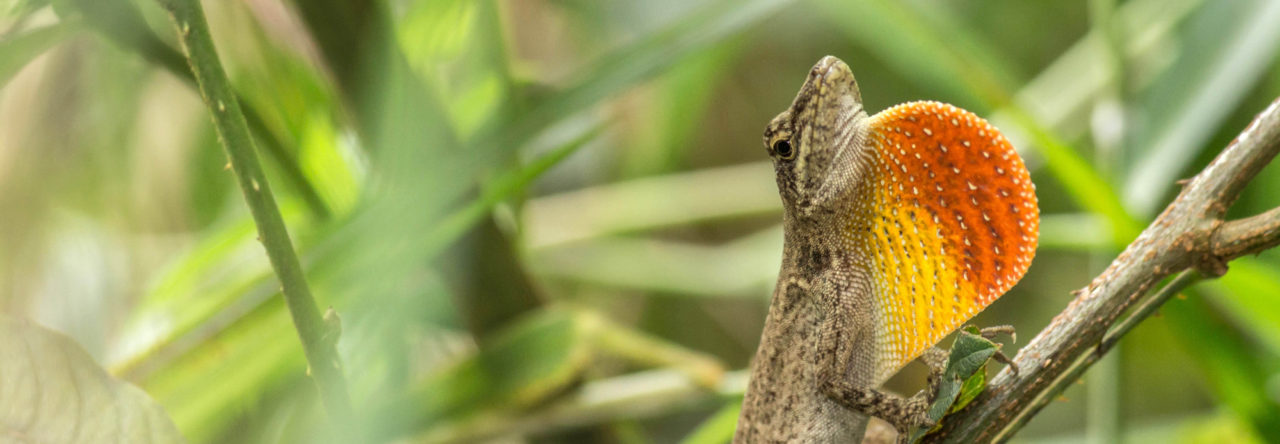Anolis polylepis is a small and very abundant anole that occurs in southwestern Costa Rica. Recently, Köhler and colleagues divided A. polylepis into two species based on the structure of the hemipenis illustrated above. The vast majority of A. polylepis retains the name, but populations of the lizard on the Osa Peninsula, where the famous Corcovado National Park is located (and hence from where many people know A. polylepis) are now to be known as A. osa.
The species may be distinguished by their man parts. Anolis polylepis, whose hemi-tallywacker is on the top row above, has a bilobed organ, whereas that of A. osa, on the bottom row, is unilobed. What appears to be a narrow hybrid zone occurs at the base of the Osa Peninsula, where lizards exhibit an intermediate hemipenial morphology. Köhler et al. examined a number of other morphological characters, including dewlap color, and found that in all other respects, the two taxa could not be distinguished.
Köhler has split a number of other Central American anoles into multiple species on the basis of hemipenial variation. As far as I’m aware, none of these taxa has yet been examined with molecular data. It will be interesting to see whether these differences truly are associated with lack of genetic exchange. If so, the next question, as with examples of genital variation in general, would involve study of whether hemipenial variation is causally related to lack of interbreeding, due to either mate choice, mechanical difficulties or for some other reason.
- Evolution in Real Time on Lizard Island - March 23, 2025
- Spider Snags Adult Anolis osa - March 22, 2025
- An Homage to the Green Anoles of New Orleans - March 21, 2025



Rich Glor
I think we’re missing out on lots of insights due to our failure to gather comprehensive data at the time or preservation. Most folks working in the West Indies (myself included) often fail to evert hemipenes during preservation, preventing us from doing work that seems especially useful for delimiting species boundaries. In turn, some of the folks working in the mainland aren’t as thorough when it comes to obtaining the tissue samples necessary for molecular work.
Peter Uetz
Not that I do not trust the penis taxonomists, but I wonder if anybody has ever tested reproductive isolation based on penis shapes. How about variation in hemipenis morphology? Sure, different penes indicate isolation but maybe females don’t care that much. Maybe this is a naive question but it’s always fun to think about sex 🙂
Jonathan Losos
I think research of this sort would be very important, but am unaware that anyone has done anything like this.